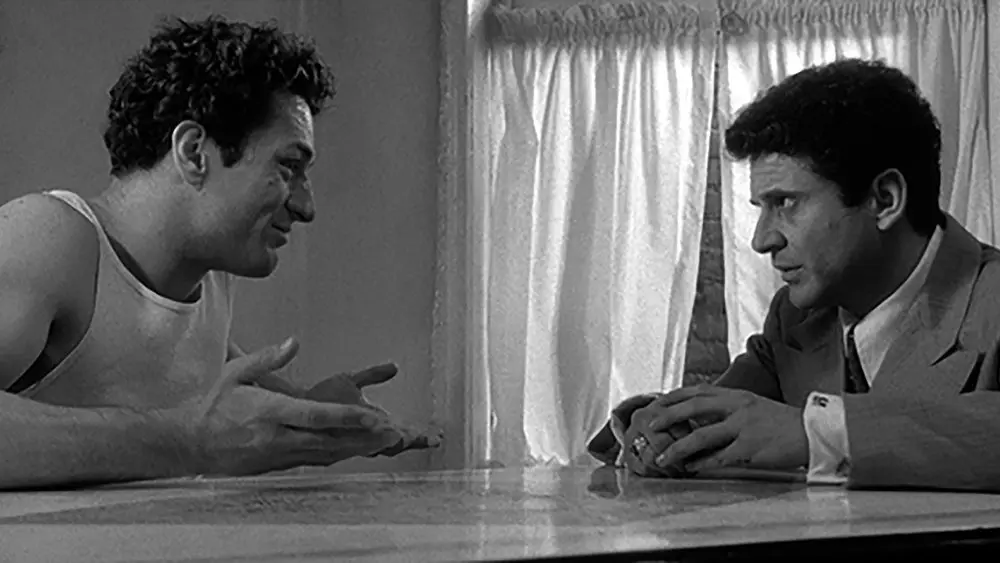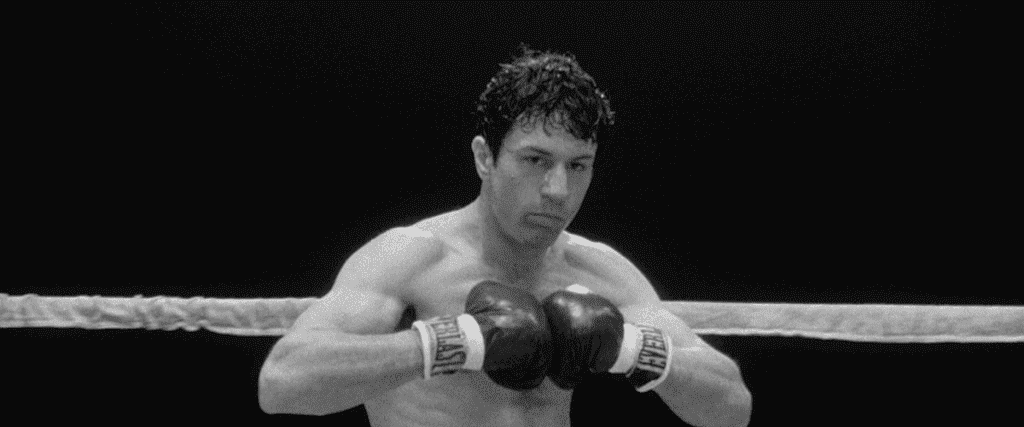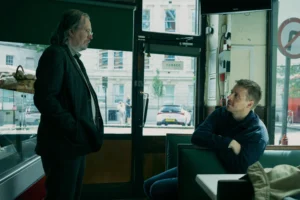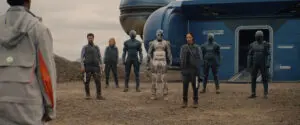Summary
A film that stands on its own terms as a great. Scorsese returns to his familiar themes of violence and masculine rage and finds the perfect vehicle in DeNiro’s career-defining Jake LaMotta.
The opening sequence in Raging Bull is for me among the very best moments in cinematic history. As a stand-alone sequence, the slow-motion shuffle of Robert DeNiro’s Jake LaMotta to Cavalleria Rusticana is balletic, elegant and moving. I was just discovering film properly for the first time when I saw Raging Bull at the age of 15, and to this day when I hear that music I am transported back to my teenage bedroom and my breath is taken away. Taxi Driver was the film that showed me what a great movie could look like; Raging Bull showed me a great movie can make you feel.
The first thing you notice when watching Raging Bull is that the fight sequences are brutal. Scorsese’s camera takes you from being a spectator to being a participant. You are in the ring with LaMotta and you feel every punch. In most boxing films you admire the fight sequences for their choreography, for their rhythm, almost in the same way you do when watching dancing. Each participant moves in a way that is designed to show us the ebb and flow of the action. In Raging Bull the experience is visceral, still impressive and technically masterful but not exactly a spectacle in the way that other boxing films can be, it’s unpredictable and uncomfortable and not always elegant; just like real fighting. Most boxing films set up their fight sequences as the vehicle for the plot or the central action in the arc of the protagonist. Raging Bull uses fight sequences not as catharsis or resolution but almost as a compulsion La Motta has to simply inflict damage on others and himself. It is part of his story, but not the reason for it.
As much as Scorsese’s camera has never been more revealing, this is De Niro’s film. He famously learnt how to box and got in incredible shape for this film and then went and put on 60 pounds in weight to play the later scenes, but it is not simply his physical transformation that creates the character on screen. De Niro’s Jake LaMotta is a coiled spring, a loose cannon, an unexploded grenade that threatens to go off at any moment. Every time he is on screen the viewer is put on edge and the threat of his temper and the inevitable violence that follows is present in every moment. Even in the boxing sequences themselves, we get no respite from it; the close-ups in these scenes create an almost suffocating effect that saturates the screen with blood, sweat and desperation. You are invested in his story despite the fact that so much of what he does is totally indefensible. La Motta is a bad person surrounded by other bad people, he’s just not quite as switched on as most of them. You come to understand him not just as a Raging Bull but as a wounded animal, acting on instinct and lashing out at all those in his field of vision.

Joe Pesci gives a stellar and underrated supporting role as Joey, Jake’s brother, manager and babysitter. Pesci would go on to win an Oscar for his role in another Scorsese film alongside De Niro in Goodfellas but for me, this is his career highlight, as Joey Pesci is more understated, more nuanced than he often has been in his more recent roles. At times in the film despite the fact that his character has friends in the mob and he’s a tough guy from a rough neighbourhood, you get the sense that he his genuinely heartbroken when he is estranged from Jake after a fight with Jake who suspects that Joey (and others) have been sleeping with his young wife Vickie.
The story takes us from the early 40s to the mid-60s and over this period we witness LaMotta’s rise and fall. We see him go from up and coming prospect, to world champion, to washed up nightclub comedian. The physical transformation we see take place is staggering, as La Motta eventually concedes defeat in his long-running battle with his waistline; as you catch up with Jake towards his final act you are struck just by how weary he has become, how haunted he is by the life he has led but also resigned to where he his. LaMotta is not a man prone to introspection; that is left for the audience. This gives us a sense of time and space but also shows us some moments of tenderness from LaMotta as he prepares his monologue for his nightclub act. There is something oddly endearing about hearing this man who has made living the ring, once a wounded animal, asking his half-empty night club for “a stage where this bull here can rage… that’s entertainment”.




